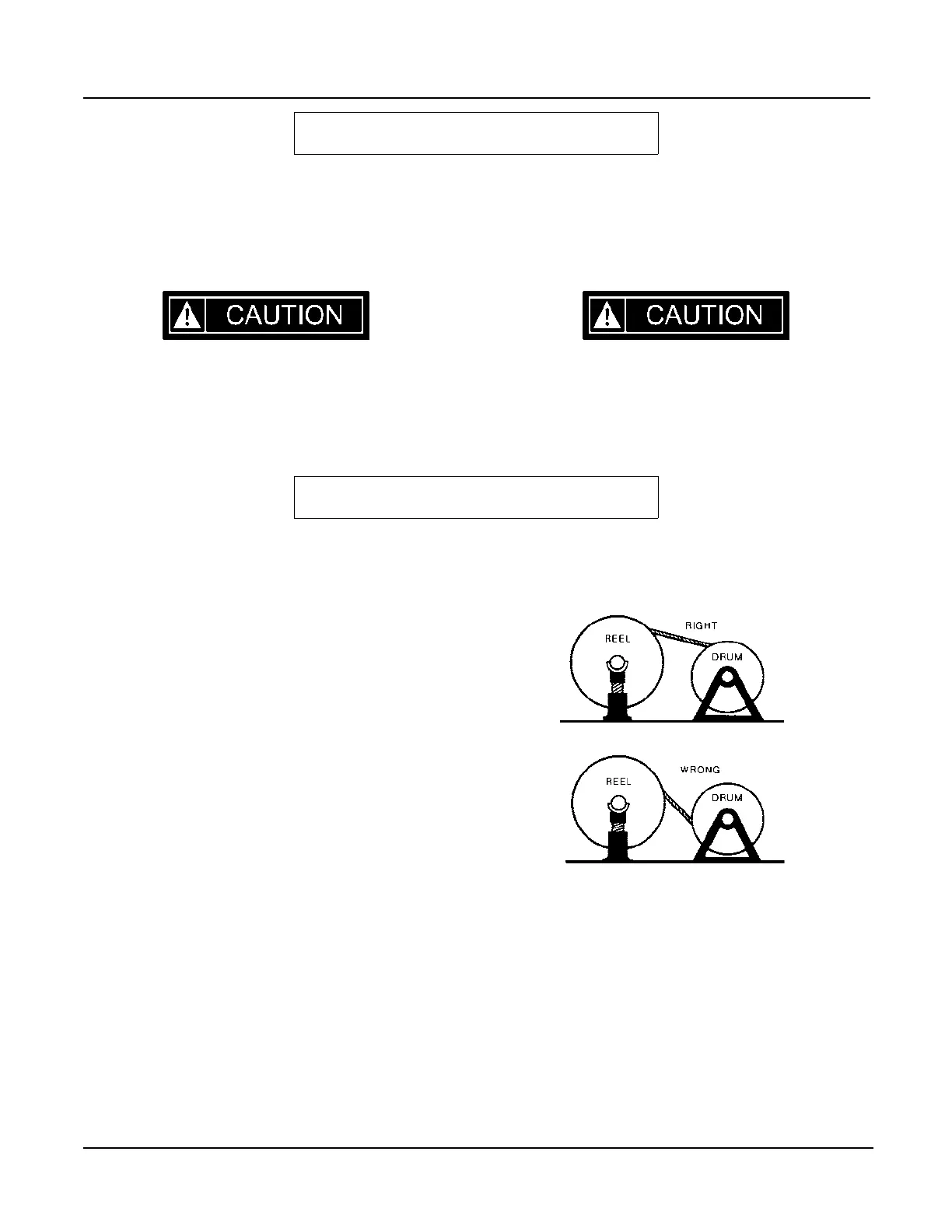CABLE REEVING When reeving the machine for any
job, remember that hoisting and lowering speeds de-
crease as the number of parts of line increases. For the
most efficient use of the machine, it is desirable to use
the minimum number of required parts for lifting the an-
ticipated loads.
Never use less than the number of parts called for by
the load rating chart. The minimum required - number
of parts is determined by referring to the load rating
chart.
Care must be exercised when installing wire rope on
the winch drum. Improper spooling can. result in rope
damage through crushing, kinking, dog- legs, abrasion
and cutting. Poorly installed wire rope will also ad-
versely affect the operating characteristics of the ma-
chine by causing uneven application of force and
motion. This, in turn, can cause premature fatiguing
and failure of the rope.
Thoroughly inspect and clean the winch before pro-
ceeding with the installation. Check the lagging and
drum flanges for cracks, breaks and excessive wear.
Deformed or outsized drum and excessive undercut-
ting at the base of the flange also indicate that repair or
replacement of the drum is necessary.
Check the bearings for excessive wear and play.
After correcting any defects revealed by the inspection
and determining that the winch is in good operating
condition, spool the wire rope as follows:
Mount the cable shipping reel vertically on jacks or a
suitable supporting structure, with a pipe or bar
through the reel center. The cable should be drawn
from the top of the reel, as shown, in order to avoid re-
verse bending as it is spooled onto the
If cable is wound from the storage reel onto the drum,
the reel should be rotated in the same direction as the
hoist.
Apply braking force to the reel flange in order to pre-
vent overrun as the rope is being drawn off. Loops
formed by overrun can cause kinks and doglegs in the
rope, resulting in damage and premature rope failure.
A timber or block forced against the shipping reel
flange can be used to provide the required braking
force.
MAINTENANCE AND LUBRICATION
CABLE REEVING
This machine incorporates a “Quick Reeving” boom
head and block which do not require removal of the
wedge and socket from the rope in order to change
the reeving. Removal of two pins in the boom head
and three in the hook block will allow the wedge and
socket to pass through.
NOTE: If a socket is changed or replaced, or if you are
changing hook block weights, it is IMPORTANT to
use the correct socket.
SPOOLING WIRE ROPE ON DRUMS
4 - 31 Revised: March 2005RT700 Series
